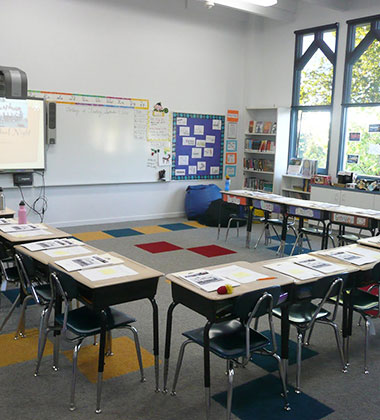
Universal
classroom in
heterogeneous
environment

Why it’s
so necessary
and why now…
Why it’s so necessary and why now…
In creating a global world, we enable creating a learning environment that adheres to a uniform sensory-visual code in all educational systems and classrooms in every country in the world, within a short period of time and at a very low cost per student.
Background
Everyone agrees that all learning processes that take place in the classroom are directly connected to the sensory system and are very important to the student’s development. The world of learning within the classroom is characterized by the student’s ability to conduct a learning process involving listening, reading, writing, thinking and speaking, with a minimal amount of sensory distractions (especially in terms of sight and sounds).
In order to be available to learn in an heterogenic environment, we need calm conditions that are as free from stimulants as possible. Sensory overload arouses the body’s emergency systems, and these make learning difficult. No one likes to be in a noisy environment that is crowded and visually overloaded, as this creates a sense of discomfort, stress and sometimes even anxiety.
However, for quite a significant percentage of the students in the world (over 20%, who suffer from attention deficit disorders, learning disabilities, sensory regulation disorders, anxiety or emotional overload, on the autistic spectrum, and more), the way that text is presented in reading and writing materials or in the classrooms, creates an additional burden that itself makes their difficulties even harder and exacerbates the objective challenges that they face in the school system. For example, instead of the student focusing his efforts on interacting with the text, he dedicates most of his effort to an attempt to push away excessive sensory stimulation that distracts him from the task with which he is trying to deal.


Classroom challenges
A bright board, the color of the walls of the classroom, the teacher’s “loud” colored clothing, the sound of the bell ringing, children moving around in the classroom, strong smells of food, etc. can all easily be a strong brain stimulant that causes the student to feel overstimulated. Over time, this will express itself as fatigue, frustration and a lack of concentration. These difficulties can lead to misbehavior while learning, which will then impact the learning experience of other students.
Over the past decades, no one has paid attention to the subject of “sensory stimulation” and its impact on a “regular” student’s ability to function, not to mention the impact on those students who have attention deficit disorders and learning disabilities, which are a significant percentage of the student population, as well as vision impaired and special education students.
In any educational system that emphasizes providing equal tools and opportunities, and especially better accessibility, the reality must be the ability to minimize most of the distractions in order to create a learning environment that is as calm as possible.
The external world radiates upon the internal world. The more that the student’s internal world is empowered, the student will correspondingly empower his external world.
Read more
Foundations for universal classroom
• To enable all students to enjoy a proper, calm, focused and empowering learning experience.
• To provide a comprehensive solution for all types of students, without exception, in all subjects and at any age.
• To provide all students with a strong cognitive basis for learning under optimal conditions.
• To significantly improve the classroom and school-wide climate.
• To enable teachers to teach in a focused, effective and high-quality manner.
• To bring the school up to a high level of learning and serenity.
• To create an optimal environment where the student can realize his potential.
Professional Scientific Advisory Board
The recommendations for implementing the Sensory-Visual code are based on professional scientific opinions supported by studies and papers, and compiled in this file by the professional staff at Gnotebook, which includes a developmental ophthalmologist, a medical psychologist, remedial/adapted learning specialist and additional professionals with vast experience working with students of all ages.
Tenets of the Sensory-Visual Code
• Painting the classroom walls and school walls in calming colors (light yellow, beige).
• Changing the white board in the classroom to alight yellow “matte” board that does not reflect light.
• Changing the lighting in the classroom from white to warm yellow.
• Creation of a uniform visual code regarding the teacher’s clothing (clothing that doesn’t bother the eye – not striped/checkered, etc.)
• Stopping the blaring bells which constitute a sensory interference for a large number of students.
• Printing learning materials (books, booklets, worksheets) on beige/cream-colored paper instead of white.
• Using didactic aids that develop organizational skills during the learning and writing process.
• Creation of an international code for the appearance and style of text in books and booklets, in order to provide an equal opportunity to all students in a heterogenic environment.
• Signaling recess/end of recess using large clocks hung in each classroom, in the hallways and in public areas, which will both reduce distraction levels and increase the sense of personal responsibility among the students.
Read less

